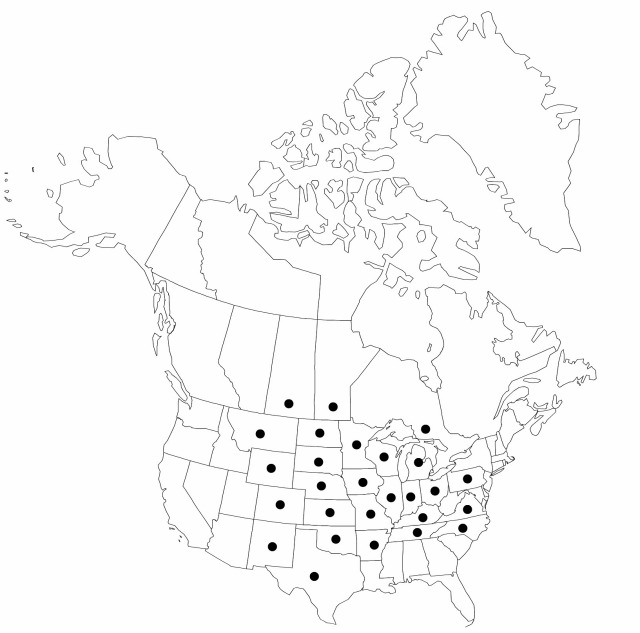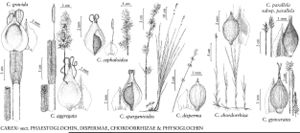Carex gravida
Mem. Torrey Bot. Club 1: 5. 1889.
Plants without conspicuous rhizomes. Culms (20–) 30–100 cm, 2.5–8 mm wide basally, 0.7–1.6 mm wide distally. Leaves: sheaths usually loose, proximally green-and-white-striped, not white spotted, with conspicuous transverse veins on back, fronts hyaline, sometimes transversely rugose and red dotted, thin, white or hyaline and fragile at mouth; ligules 2–7 mm, shorter to longer than wide; widest leaf-blades (3–) 4–8 mm wide. Inflorescences with 5–15 spikes, 1–5 cm × 8–15 mm, occasionally compound, then somewhat larger; proximal bracts to 3 cm; spikes with 5–15 ascending to spreading perigynia; proximal internodes shorter than to 1.5 times as long as proximal spikes. Pistillate scales hyaline or brown with green, 1–3-veined center, ovate, 2.6–4.4 × 1.3–2.4 mm, body shorter to slightly longer than perigynium, apex acuminate to short-awned. Anthers 1.5–3 mm. Perigynia pale green to pale-brown, veinless or 3–7 (–12) -veined abaxially, rarely veined adaxially, 3.5–5.5 × 2–3 mm, body somewhat spongy, base thickened, margins serrulate distally; beak 0.6–1.6 mm, apical teeth 0.3–1 mm. Achenes circular to elliptic circular, 1.8–2.1 × 1.6–2 mm.
Phenology: Fruiting late spring.
Habitat: Prairies, ditches, swales, open forests, usually on calcareous soils
Elevation: 100–1400 m
Distribution

Man., Ont., Sask., Ark., Colo., Ill., Ind., Iowa, Kans., Ky., Mich., Minn., Mo., Mont., Nebr., N.Mex., N.C., N.Dak., Ohio, Okla., Pa., S.Dak., Tenn., Tex., Va., Wis., Wyo.
Discussion
Carex gravida is introduced in North Carolina.
Selected References
None.
Lower Taxa
"shortened" is not a number.
